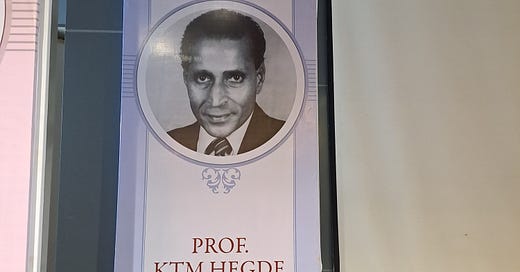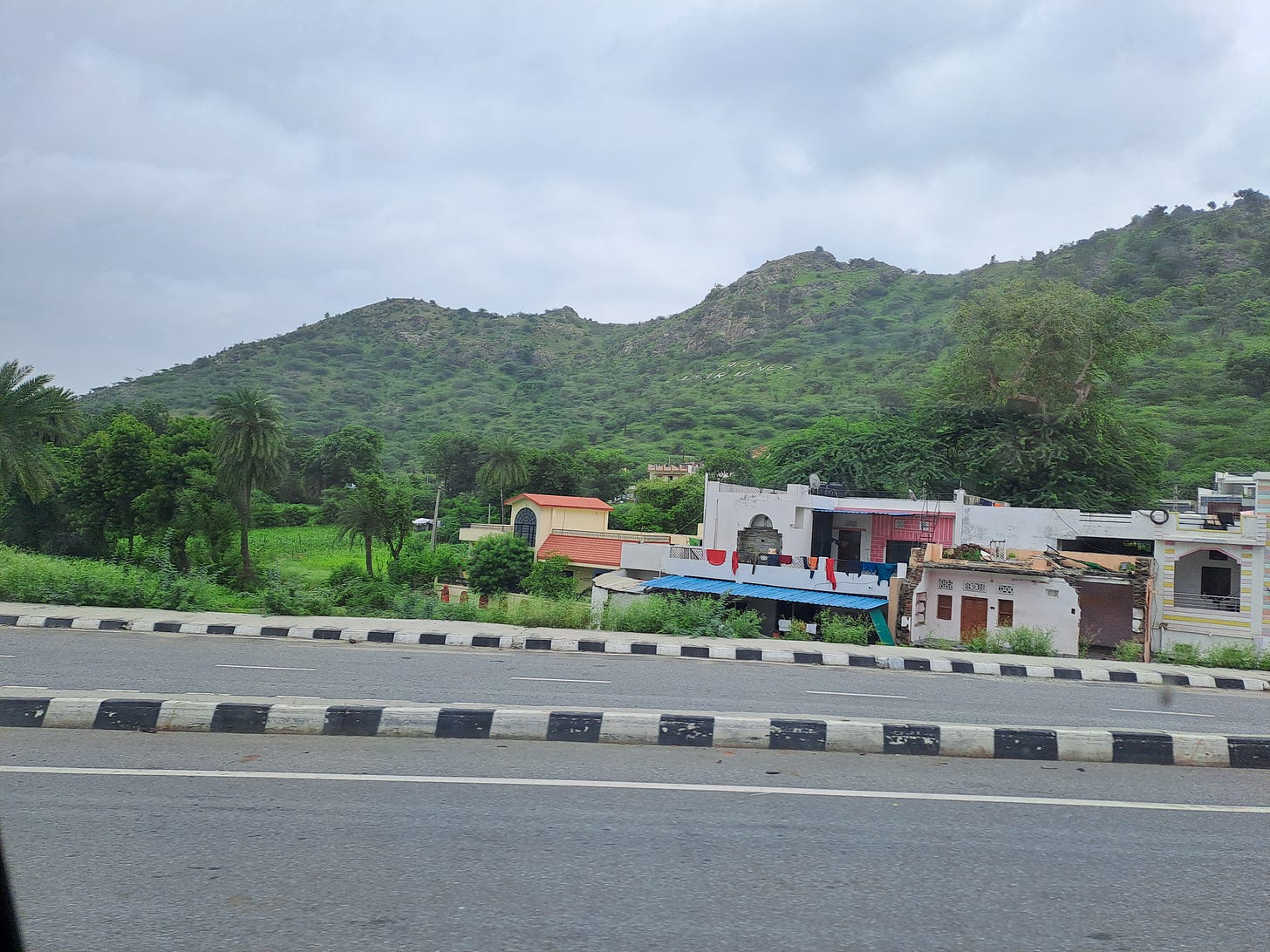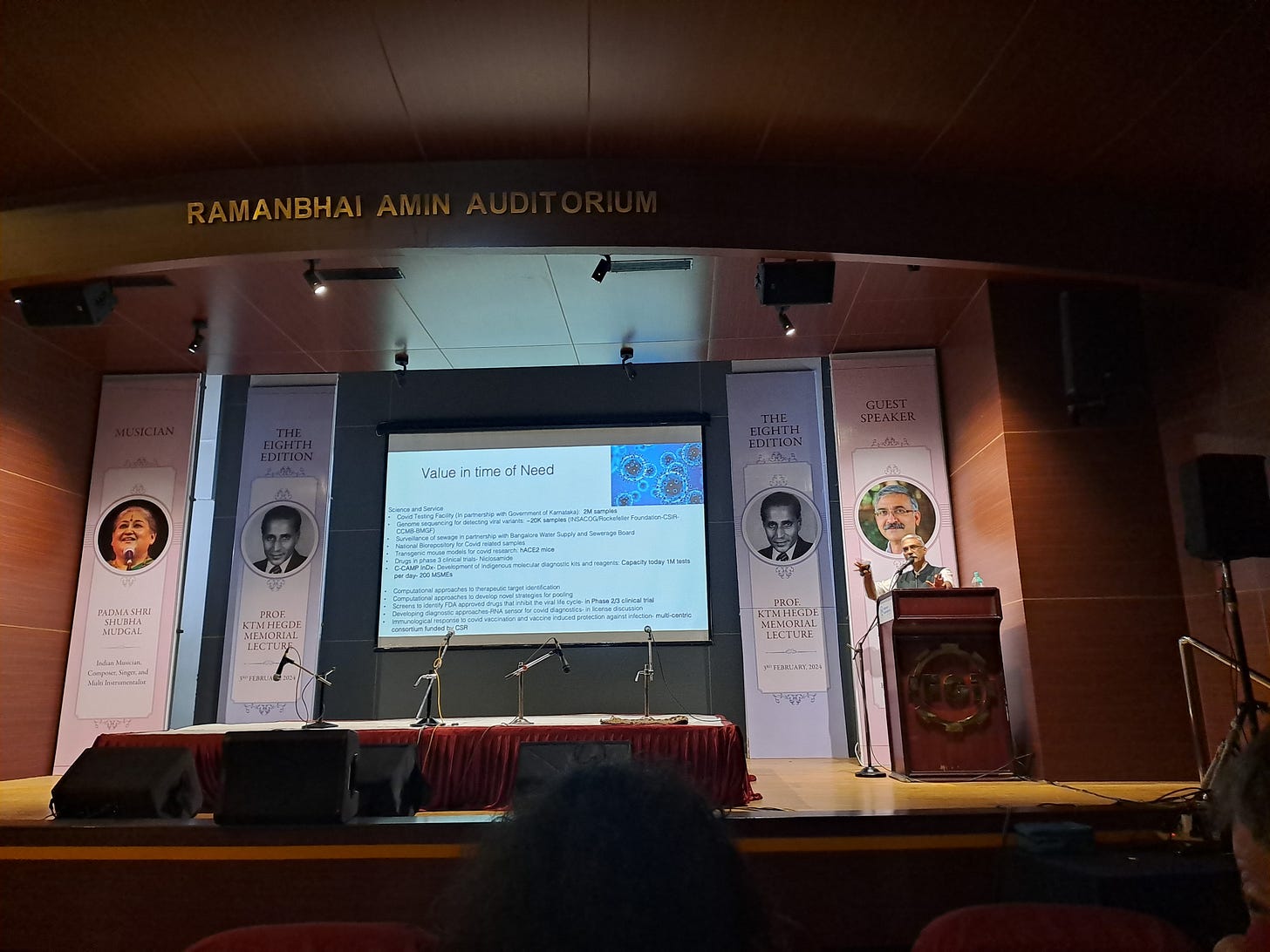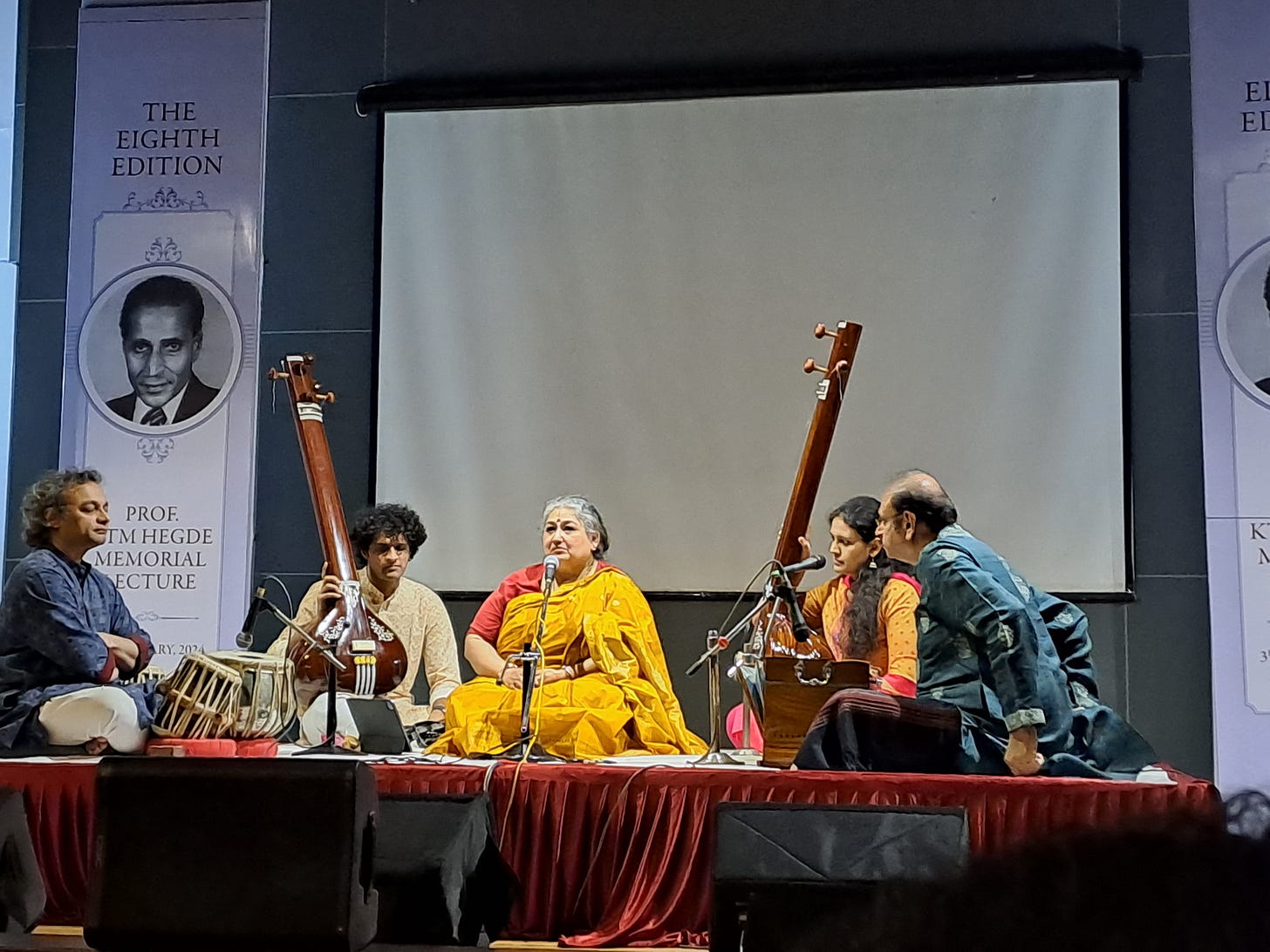It is strange how people have come to my small town from all over India, lived and worked here for years, then left for various reasons, but the smart little town keeps pulling them back every now and then, even for a short while. Many years after eminent archeologist Prof. Dr. K T M Hegde passed away, barely 64 years of age, his four sons and daughters-in-law decided a few years back to institute the annual Prof. KTM Hegde Memorial Lecture Series in his honour in Baroda.
While they were in college here, the Hegde boys, as they were popularly known, two studying to be doctors, Sajjan and Harshavardhan, and two engineering, Sujan and Adarsh, were active in several extra-curricular activities, especially theatre. While Sajjan married early, continued super specialization studies in problems of the spine and moved to Chennai, the younger three were deeply involved in Shakespeare Society for a number of years and supported activities and events related to music, dance, art. As each of them married and raised families, Harsha moved to Delhi, and Adarsh to Mumbai. Sujan worked in Baroda and stayed with the mother in their family home in Sama. A few years back, the boys were together, reminiscing about the Baroda of their youth and missing the absence of much creative activity that had made living in this small town interesting and exciting. That’s when they thought up a Lecture Series in the memory of their father, whose main interest was academics and the arts, as their live contribution to a town that had given so much to them. So the Lecture Series was designed as a two-hour evening event, one hour dedicated to an academic speaker, the next hour for a performance.
The 8th Memorial Lecture was held last Saturday to a more-than-packed hall. Given that the speaker was eminent biologist, Dr. Satyajit Mayor, followed by a vocal recital by Shubha Mudgal, this was understandable but one must remember that now all of the Hegde family has left our small city, Sujan having sadly succumbed to COVID, and their mother, Smt. Sarojini, now 92, having shifted to Harsha’s home in Delhi, the Sama home completely shut for the time being. But it is their various and vast numbers of friends and well-wishers in the small town who look forward to this event every winter and put in sincere efforts to make sure that invites are forwarded and that the annual Lecture is always a success! It is now the family’s only way of holding on strongly to their Baroda roots.
So who exactly was KTM Hegde? And why is he important to Baroda? After he earned his Masters from the Cambridge University, Prof. Hegde came with his young family to the M S University, specifically to the Dept. of Ancient History and Archeology in the Faculty of Arts, to teach while he registered for his doctoral studies simultaneously. This department already had the scholarly Prof. B Subbarao as its head since the University was established in 1950. Dr. R N Mehta, his immediate junior, was already working on the excavation of the medieval site of Champaner, 45 km from Baroda. Prof. Hegde found himself in invigorating intellectual company in the then young and vibrant University that nurtured academic talent in its various faculties.
Even as he taught at Baroda, his scholarship and keen knowledge of the subject – ancient Indian metallurgy -- earned him several fellowships for research and teaching in prestigious academic institutions across the world – at Harvard, St. John’s College, Cambridge, Wolfson College, Oxford, to name a few. More than 70 research articles and papers that he authored found pride of place in Indian and foreign journals. He also co-authored several books, the most well-known amongst which is Early Indian Metallurgy: The Production of Lead, Silver and Zinc through Three Millenia in North West India that he wrote with Craddock, Gurjar and Willies, and which is a study of ‘the extraordinarily well preserved remains at three major mining and metal production sites in the Aravalli Hills of Rajasthan (Agucha, Dariba and Zawar) ...’ Their survey and excavation work here revealed a ‘long-term development of mining and smelting activity over 3000 years’! Silver was mined at Dariba and Agucha during the Mauryan period over 2000 years back and Zinc Oxide at Zawar. During the Medieval period, Zinc metal was ‘produced by advanced processes of high temperature distillation, almost certainly the earliest commercial zinc production in the world’. The authors could establish that laboratory processes developed here lead to major industrial processes, with ‘the birth of chemical industry at least 500 years before similar developments began in Europe’.
Do you see some faint written stuff on the middle hill? It is Zawar Mines. I took the picture on a recent trip to Udaipur.
Amazing, isn’t it? I had to study Ancient History as one of the subjects in the foundation year or what was then known as Preparatory Year, when I took admission in MSU. Though Prof. Hegde was never my teacher, his department buildings were opposite the English department where we would usually be hanging out with classmates between classes. We often saw him, a dapper physically fit man, very well-dressed and groomed, always alone, walking briskly either towards the Science Faculty or the Hansa Mehta Library. When he took over as the head of his department in 1982, he was able to attract global academic interest and support for the department’s research interests and activities. The Ford Foundation, New York, recognizing the department’s capabilities, offered a generous grant that boosted the scientific temper at the department in a significant way.
So much for the quiet contribution of this man to my small town!
Dr Satyajit Mayor delivering his Lecture.
This year’s event was important for another reason too – the speaker was Dr. Satyajit Mayor, another brilliant and quiet Barodian (many in-the-know are sure he is a Nobel Prize contender sometime in the future), belonging to an old Baroda family. He studied Chemistry at IIT, Mumbai, and earned his PhD in Life Sciences from the Rockefeller University, New York. Till date he has bagged almost all the major global awards in his field – the Shanti Swaroop Bhatnagar CSIR award, TWAS prize in Biology, Italy, Infosys prize in Life Sciences, Distinguished Alumnus of IIT Mumbai, and National Order of Merit, France. A protégé of pioneering molecular biologist, Padma Vibhushan Dr. Obaid Siddiqi, Dr. Mayor was the Director at the National Centre for Biological Sciences (NCBS), TIFR, Bangalore, from 2013 to 2023. But while he continues to be Distinguished Professor at NCBS, he is now the Leverhulme International Professor at the Centre for Mechanochemical Cell Biology, University of Warwick, where he has moved his laboratory and researchers working under him.
Dr. Mayor’s talk, Journey to the Surface of a Living Cell, was perhaps a natural follow-through of his own scientific journey. The first slide showing the wobbly living cell in a bloodstream chasing infectious / unknown bacteria and capturing/killing them so that they keep each of us healthy most of the time, appeared almost like a sharp comment on scientists operating precariously in a world where political opinion and the actions emanating from these are so much against the upholding of a scientific temper. His wonderful description and presentation of the beautiful buildings of the NCBS, Bangalore, which house laboratories where committed scientists do path-breaking research finding preventive or curative answers to debilitating diseases, would have been very useful to students and teachers of Life Sciences in the audience looking for glorious pathways to future career growth. His own move to the UK answering the call of better opportunities, generous funding, state-of-the-art equipment, access to key technical conferences as opposed to taps running dry here was also a quiet gesture at another wave of brain drain that is engulfing the country.
While the Hegde family and Dr. Satyajit Mayor were like wonderful migratory birds coming to the old home to a warm welcome for just a little while, the legendary Shubha Mudgal’s haunting voice allowed all of us to take refuge in the music for the rest of the evening and let material things be …
The wonderful Shubha Mudgal …








I obviously have many more insights for the Hegde bros. Very happy to have Dr. Harsha as a mentor/ elder brother of sorts.
But even more important for me is that Anjali hegde was a sounding board like no other, and a patient listener.
and a huge part of what I have become. if anything.
The family took me into their lives, a poor lonely kid from Kuwait. Even gave me a pity role in a play!
And Saroj aunty made sure we were fed properly.
Now that's a legacy.
Very well researched, detailed, yet heart warming.
Thank you Sandhya for the such fine details of a place what makes it a soulful place! This inspires.